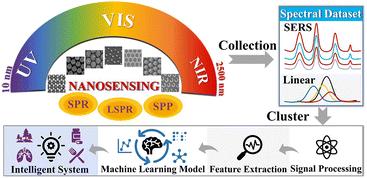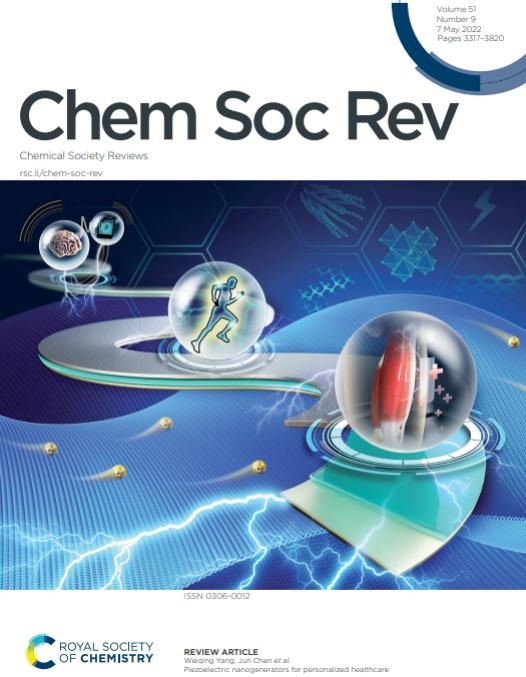Closing the loop in next-generation sensing through shadow sphere lithography, plasmonics, and artificial intelligence
IF 39
1区 化学
Q1 CHEMISTRY, MULTIDISCIPLINARY
引用次数: 0
Abstract
The rapid deployment of intelligent energy, health-care and manufacturing platforms is outpacing the capabilities of conventional transducers, demanding sub-percent accuracy, millisecond responses, long-term stabilities and wafer-scale integration. Plasmonic micro- and nano-optical sensors can, in principle, satisfy these metrics, but only if three historically separate research threads converge: (i) physics-guided nanostructure design that realises high-Q hybrid resonances; (ii) fabrication routes that translate these blueprints into low-cost, large-area devices; and (iii) data-centric signal processing and prediction that extracts reliable information from inherently weak, drift-prone optical read-outs. This review (mainly covering the years 2019–2024) provides the first end-to-end account of that convergence. We highlight shadow-sphere lithography (SSL) as a scalable, sub-50 nm patterning strategy; map the resulting structural library onto its plasmonic, lattice and bound-state resonances; and show how physics-aware artificial-intelligence (AI) pipelines denoise spectra, compensate batch variability, enhance the prediction, and even invert the design problem. We close by outlining a closed-loop roadmap—linking SSL, plasmonics, and AI analytics—that targets high refractive-index resolutions within millimetre footprints, while identifying open challenges in wafer-scale 3D patterning inverse design and automated self-assembly, to in-line quality grading, to adaptive signal interpretation.

通过影球光刻、等离子体和人工智能实现下一代传感闭环
智能能源、医疗保健和制造平台的快速部署正在超越传统传感器的能力,要求精度低于百分之几,毫秒级响应,长期稳定性和晶圆级集成。原则上,等离子体微光学和纳米光学传感器可以满足这些指标,但前提是三个历史上独立的研究方向融合在一起:(i)实现高q混合共振的物理引导纳米结构设计;(ii)将这些蓝图转化为低成本、大面积设备的制造路线;(iii)以数据为中心的信号处理和预测,从固有的弱的、容易漂移的光学读出中提取可靠的信息。这篇综述(主要涵盖2019-2024年)首次提供了这种融合的端到端描述。我们强调暗球光刻(SSL)是一种可扩展的,低于50纳米的图案策略;将得到的结构库映射到等离子体、晶格和束缚态共振上;并展示了物理感知的人工智能(AI)管道如何对光谱进行降噪,补偿批次可变性,增强预测,甚至反转设计问题。最后,我们概述了一个闭环路线图,将SSL、等离子体和人工智能分析联系起来,目标是在毫米范围内实现高折射率分辨率,同时确定了晶圆级3D图案逆设计和自动化自组装、在线质量分级、自适应信号解释等方面的开放挑战。
本文章由计算机程序翻译,如有差异,请以英文原文为准。
求助全文
约1分钟内获得全文
求助全文
来源期刊

Chemical Society Reviews
化学-化学综合
CiteScore
80.80
自引率
1.10%
发文量
345
审稿时长
6.0 months
期刊介绍:
Chemical Society Reviews is published by: Royal Society of Chemistry.
Focus: Review articles on topics of current interest in chemistry;
Predecessors: Quarterly Reviews, Chemical Society (1947–1971);
Current title: Since 1971;
Impact factor: 60.615 (2021);
Themed issues: Occasional themed issues on new and emerging areas of research in the chemical sciences
 求助内容:
求助内容: 应助结果提醒方式:
应助结果提醒方式:


